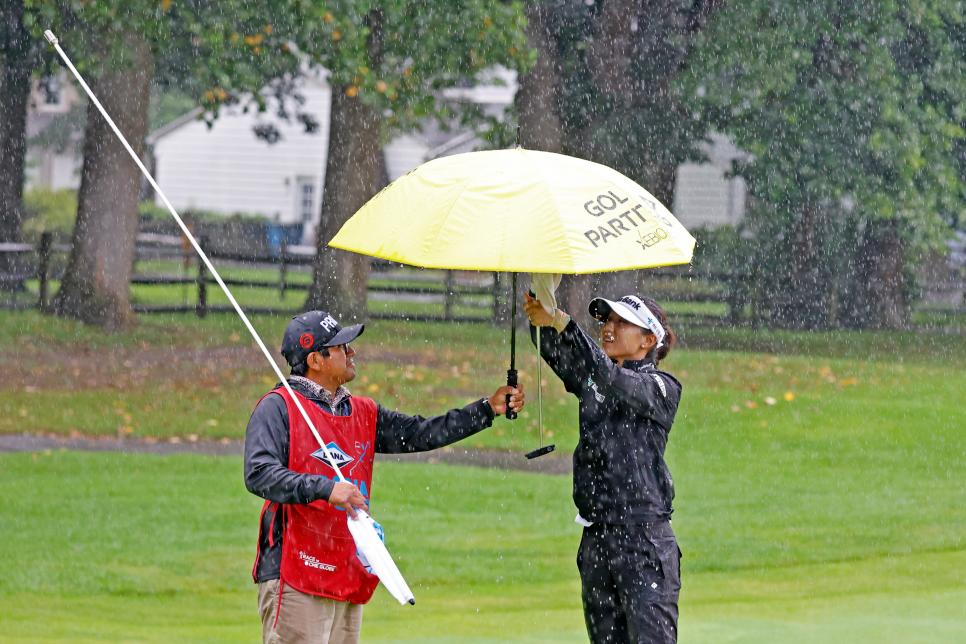[PHOTO: Harry How]
We beat the drum on re-gripping regularly. That’s because it’s way past time golfers start thinking about their grips as equipment for their hands instead of simple handles for golf clubs.
In many ways, grips are beginning to embark on a journey much like footwear did before it: being considered as a means of improving one’s game rather than simply an accessory.
First, however, you need to know when it’s time to change your grips. Below we offer some tell-tale signs when you should head for the nearest golf-club repair shop well before the club starts flying out of your hands.
The grip feels slick
OK, we’re starting with Captain Obvious here, but it’s important to know grips don’t just become slick overnight. whether you know it or not, it’s not just wear from play and practise that makes for a bad grip. Dirt, heat, and oil from your hands contribute to its breakdown as well – and this begins to happen well before it’s obvious. Also, not all grips wear at the same rate. You use your driver more than 10 times per round but your 5-iron might be hit only twice a round. Pay particular attention to the clubs you use most.

The grip looks shiny
With all rubber or cord grips they tend to become shiny when they are worn. Over time and use the oils on hands and elements break down the rubber. As such, the grip loses its tactile properties, becoming hard and slick, which make it more difficult to hold onto.
Material wear
Staying in the readily noticeable lane, if you notice the material on any of your grips is starting to deteriorate, it’s time to re-grip. Just like a golf glove, there are areas that tend to wear away faster than others. Be on the lookout for the rotting away of material or those pesky concave areas where the fingers or thumbs are typically placed.

Playing in humid or wet conditions
Now let’s get into some areas you might not be aware of. For example, you might need to re-grip even if they’re not worn. If you play in hot, humid conditions, a typical rubber grip might not be best for you. I always use a rain glove, because my hands tend to sweat. A fitter noticed that and suggested a tackier grip such as a cord grip. Cord delivers more moisture irrigation and tactile traction. It’s a good idea to assess your typical playing conditions and consider the right material.
Paint wear
Noticing the paint fill missing from an area of your grip? That’s not a defect in the grip, but rather an easy tell-tale sign of grip wear. Inspect your grips for this kind of wear regularly.
Missing right or left consistently could be due to wrong grip size
You know those wayward shots? That might not be because your swing is a random event. Although almost all clubs come stock with a standard-size grip, the fact is only about half of all golfers fall into that category. Too big or too small grips can cause too much or too little wrist release, leading to reduced accuracy.

It’s been a year or more since your last regripping
Regardless of how often you play, if it’s been a year since you re-gripped, get it done. Grips can become hard and slick simply by sitting in your car in extreme heat or cold. And if you play once a week or more during the year, it’s a no-brainer. With normal use there’s enough degradation of the material after a year to warrant fresh grips. Plus, you’re actually leaving metres on the table by not re-gripping.
What’s that you say? It’s because once a grip loses its traction you are likely to grip the club tighter – a definite no-no. The traction that a fresh grip provides lets you hold the club lightly without the subconscious fear of losing the club during your swing. This relaxed state promotes proper swing mechanics and wrist action. Meanwhile a worn grip causes you to grasp the club tighter, causing arm and wrist tension that inhibits proper swing mechanics and leads to a loss of power and control. How much damage does that do? A recent study by market leader Golf Pride reveals players gain about two metres with fresh grips versus worn grips. If that doesn’t sound like a lot, consider every golf club manufacturer would be delighted if its next driver or irons delivered such gains.
Like we said, equipment for the hands.



